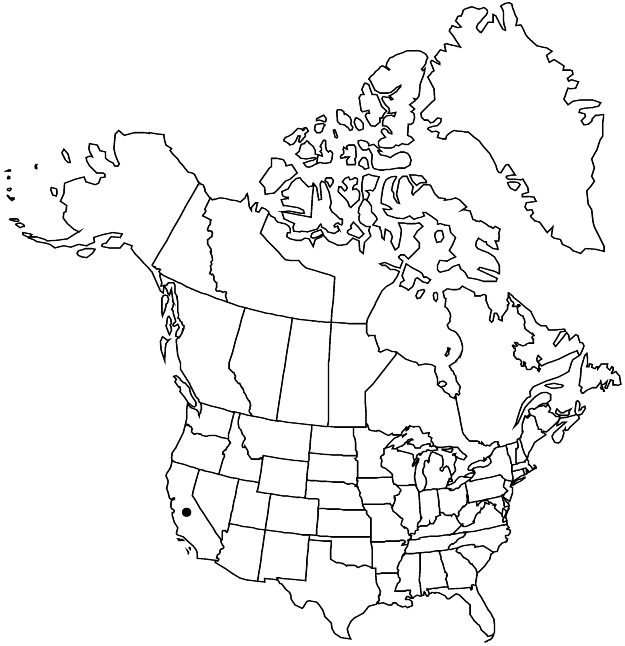Eremogone ursina
Novosti Syst. Vyssh. Rast. 10: 140. 1973.
Plants tufted, green, not glaucous, with somewhat woody base. Stems ascending to erect, 10–18 cm, often glandular-hairy. Leaves: basal leaves persistent; cauline leaves in 3–5 pairs, reduced distally; basal blades erect to ± spreading, needlelike, 0.5–1.1 (–1.6) cm × 0.5–0.7 mm, rigid, herbaceous, not fleshy, apex blunt to apiculate, glabrous, ± glaucous. Inflorescences (1–) 3–7-flowered, ± open cymes. Pedicels 0.3–2 mm, stipitate-glandular. Flowers: sepals 1–3-veined, lateral-veins less developed, ovate, often broadly so, 1.8–3 mm, to 4.2 mm in fruit, margins broad, apex obtuse or rounded, glabrous; petals white, elliptic to oblanceolate, 2–4.5 mm, 1.4–1.6 times as long as sepals, apex rounded; nectaries as lateral and abaxial rounding of base of filaments opposite sepals, with terminal lateral groove, 0.3 mm. Capsules 4.5–6 mm, glabrous. Seeds blackish purple, suborbicular to broadly ellipsoid with hilar notch, 2.2–2.5 (–3) mm, tuberculate; tubercles rounded, elongate.
Phenology: Flowering late spring–summer.
Habitat: Pinyon-juniper woodlands on rocky (quartzite) soils
Elevation: 1900-2100 m
Discussion
Of conservation concern.
Eremogone ursina is known from four counties in southern California, where it is threatened by development. It is relatively distinctive in appearance and markedly separated spatially from congeners.
Selected References
None.
